Introduction
In the rapidly evolving landscape of cloud computing, Amazon Web Services (AWS) and Microsoft Azure emerge as the dominant forces, each offering a diverse array of services tailored to meet varying organizational needs. Since their respective launches—AWS in 2006 and Azure in 2010—these platforms have transformed the way businesses approach technology, driving innovation and efficiency across industries. AWS, recognized for its extensive portfolio and scalability, serves as a cornerstone for companies ranging from startups to large enterprises.
Meanwhile, Azure leverages its seamless integration with the Microsoft ecosystem, making it particularly appealing for organizations entrenched in Microsoft products. As enterprises navigate their cloud strategies, understanding the fundamental differences in service offerings, pricing models, and technological capabilities is essential. This article delves into the intricacies of AWS and Azure, illuminating their strengths and weaknesses while providing valuable insights for businesses aiming to optimize their cloud investments.
Overview of AWS and Azure
"Amazon Web Services (AWS) and Microsoft stand as the leading service providers, each offering an extensive range of services designed to fulfill a diverse set of business needs.". AWS, which debuted in 2006, has established itself as a leader in the cloud domain, boasting an extensive portfolio and a proven track record in reliability and scalability. Its robust infrastructure supports a diverse global clientele, facilitating everything from simple web applications to complex enterprise solutions.
In contrast, the cloud platform launched in 2010 has rapidly carved a niche, particularly among organizations already embedded in the Microsoft ecosystem. This synergy enables the platform to provide a seamless integration experience for businesses leveraging Microsoft products like Office 365 and Dynamics. With significant investments in infrastructure and services, the platform has seen a marked increase in adoption, particularly in enterprise environments where existing Microsoft solutions are prevalent.
Both platforms excel in providing extensive global coverage through their data centers, enabling entities to deploy applications and services closer to their end-users. However, they differ fundamentally in their service architectures and pricing models. AWS utilizes a pay-as-you-go approach that enables businesses to scale resources dynamically, fostering innovation and agility. Azure, on the other hand, offers a variety of pricing plans that can cater to specific organizational needs, making it a compelling choice for enterprises that require tailored solutions.
As companies scale, they often encounter the challenge of optimizing their architecture to reflect growth. For instance, Dunelm Group plc, the UK's leading homewares retailer, effectively leveraged AWS to enhance its digital platform, which now attracts over 400 million annual sessions and accounts for approximately 35% of its revenue. This transition illustrates how online services can support significant business advancements.
Moreover, leaders in the industry, like Amor Steinberg from BMW Group, emphasize the importance of adopting modern architectures, such as microservices and serverless frameworks, to remain competitive. The flexibility and effectiveness of AWS and other cloud platforms play crucial roles in allowing businesses to innovate while managing compliance and security requirements successfully.
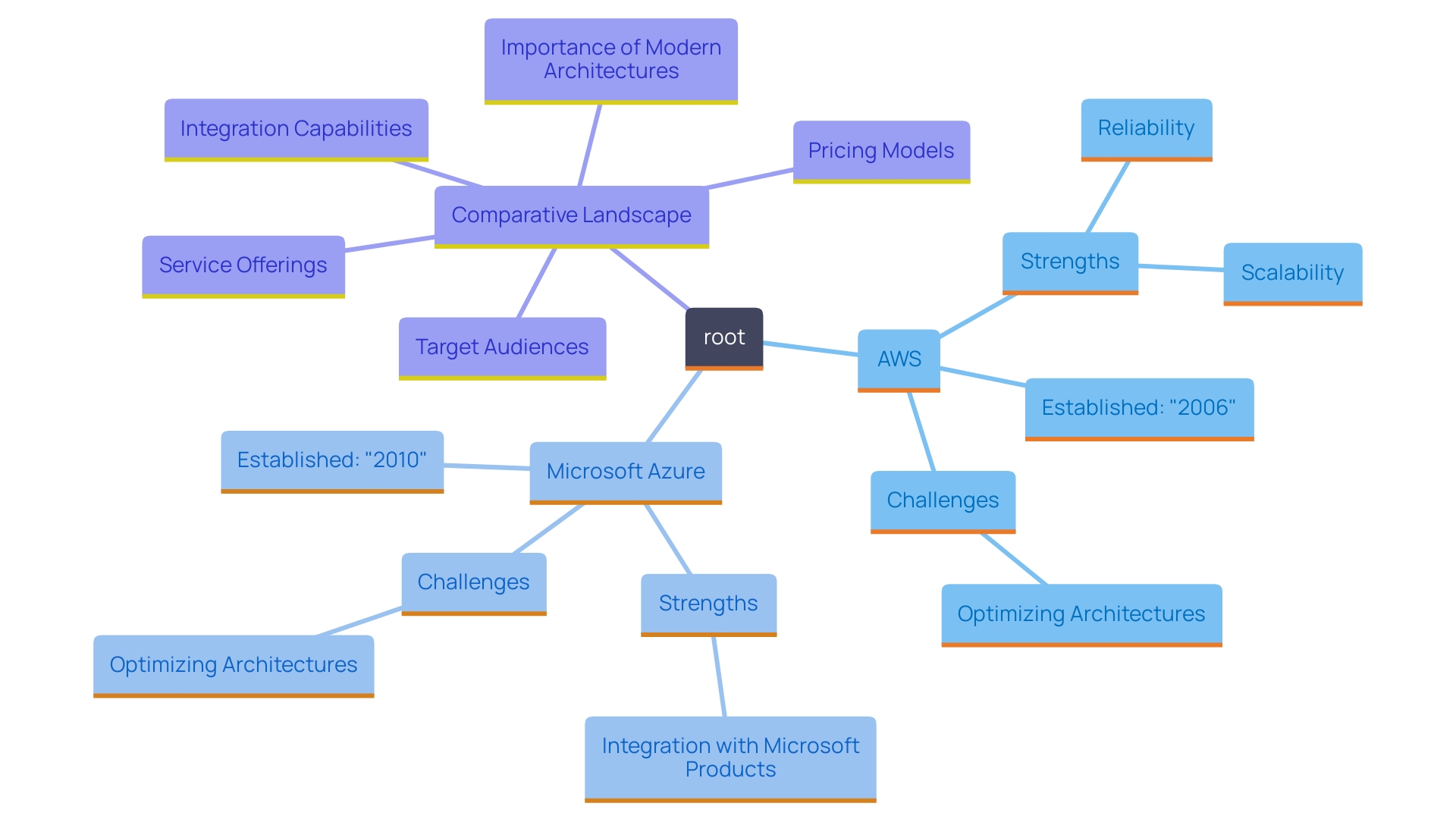
Key Differences in Computing Services
AWS and Azure are prominent players in the computing arena, each providing a unique set of services and architectural frameworks designed to meet diverse business needs. AWS, launched in 2002, has established itself as a market leader with a commanding 33% market share. Its flagship service, Amazon EC2 (Elastic Compute Cloud), serves as a cornerstone for providing scalable computing resources. EC2 permits entities to choose from a wide range of instance types tailored for specific workloads, allowing businesses to effectively handle their computing tasks in the cloud. This flexibility not only streamlines operations but also supports a pay-as-you-go pricing model, making it a cost-effective solution for organizations looking to scale.
On the other hand, the platform that entered the market in 2010 and has since captured a 13% market share emphasizes integration and cohesion within the Microsoft ecosystem. Its Virtual Machines (VMs) are designed to function smoothly with other services, providing a more cohesive experience for users already immersed in Microsoft products. Moreover, the platform is especially robust in hybrid solutions via its Stack, enabling businesses to preserve a balance between on-site and online resources. This is especially beneficial for companies grappling with legacy applications or regulatory constraints that necessitate data residency in specific geographic locations.
Both platforms have evolved rapidly, responding to the increasing demand for scalable and elastic workloads. While AWS concentrates significantly on public services, Azure's hybrid features offer an attractive choice for enterprises aiming to utilize both online and local solutions. As organizations navigate their cloud strategies, understanding these differences is crucial in aligning technology investments with business objectives.
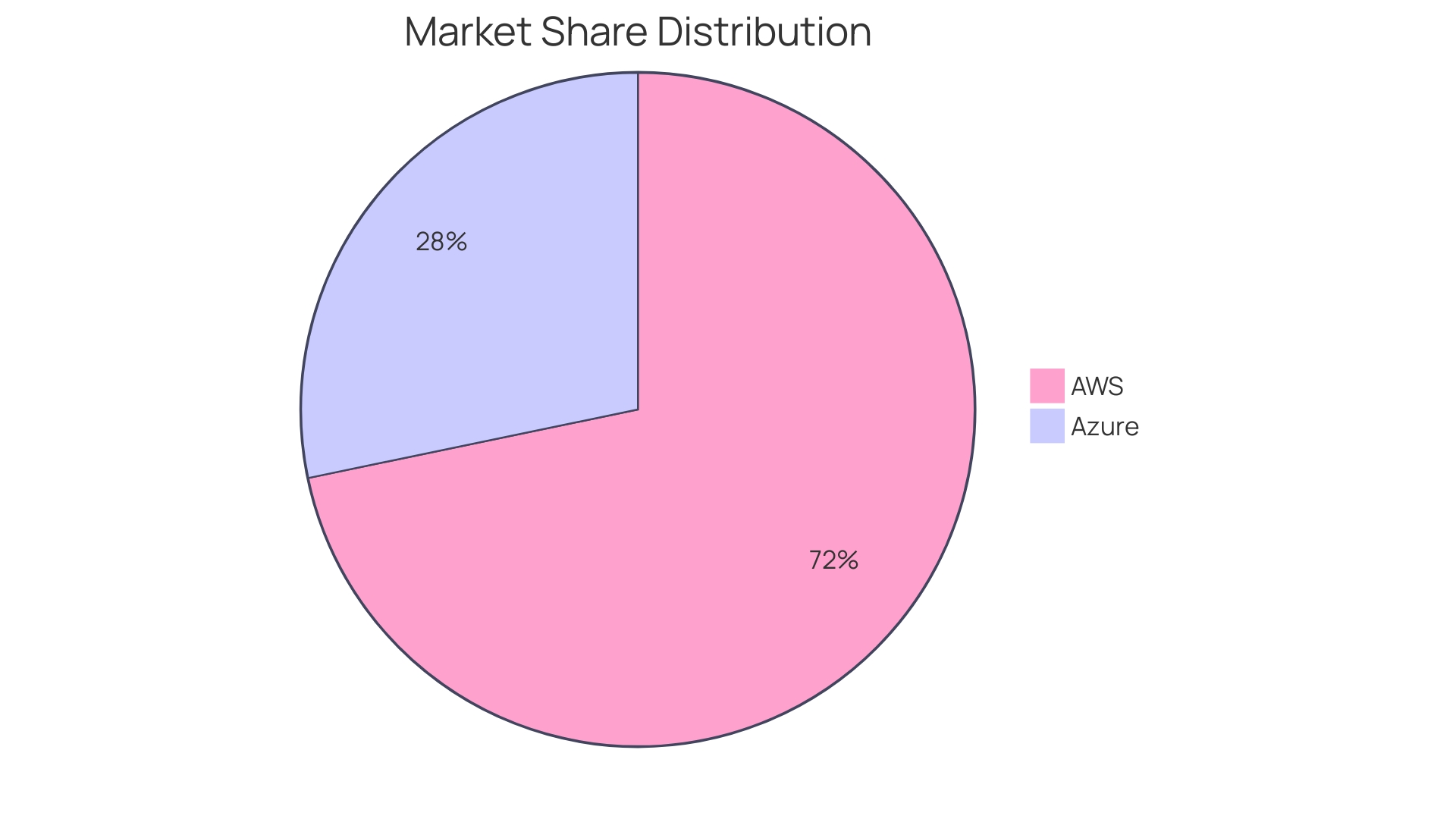
Storage Services Comparison
Both AWS and another cloud provider offer extensive storage options designed for different operational requirements. AWS excels with its Amazon Simple Storage Service (S3), which stands out as a leader in object storage. S3 allows users to store data as objects, complete with associated metadata, making it particularly advantageous for handling massive volumes of unstructured data. This architecture not only ensures cost-effectiveness but also enhances data accessibility and analysis, as noted in industry insights highlighting S3's API as the emerging standard for object storage.
In contrast, the platform provides Blob Storage, designed specifically for unstructured data, and Disk Storage for virtual machines (VMs). The storage solutions from Microsoft excel in settings already utilizing their services, offering smooth integration that can greatly assist current Microsoft clients. Azure Archive Storage is also a robust option for long-term data retention, appealing to entities needing cost-effective archival solutions.
With AWS controlling roughly 32% of the cloud market as of Q2 2023, it maintains its position as a frontrunner in cloud services, largely due to its expansive range of storage capabilities. 'The recent AWS re:Invent conference showcased numerous innovations that further enhance AWS’s storage offerings, underscoring its commitment to addressing the needs of entities managing expansive datasets.'.
As companies increasingly depend on data-informed choices, the need for efficient storage options rises. AWS customers frequently utilize its specialized data services, such as Amazon Aurora for relational databases and Amazon Redshift for data warehousing, to support critical applications and optimize performance. Meanwhile, the platform's integration with existing Microsoft ecosystems positions it as a valuable option for enterprises seeking to leverage their current investments while optimizing storage capabilities.
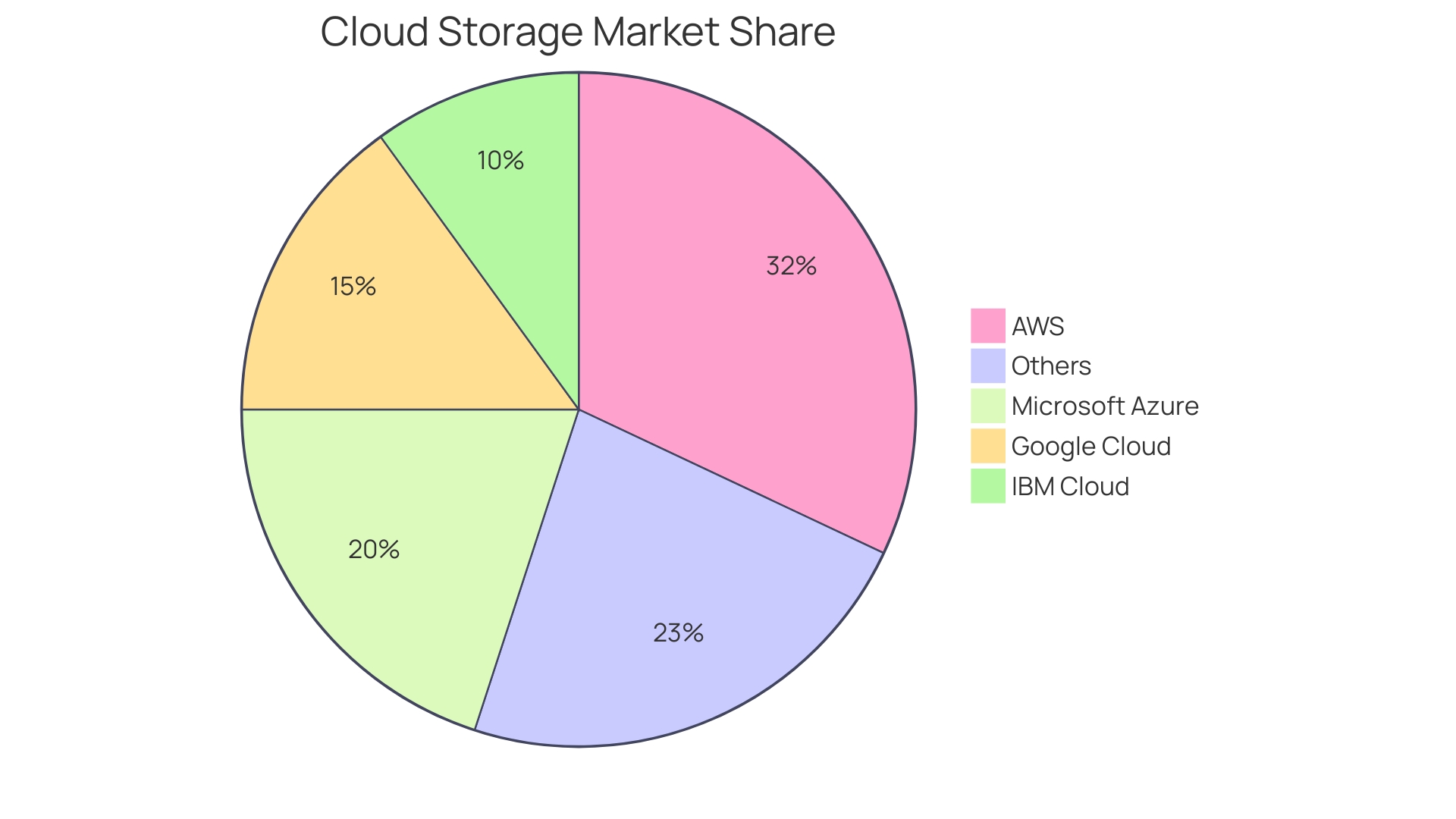
Pricing and Cost Management
Costing plays a crucial role in the decision-making process between AWS and other cloud providers, as companies aim to enhance their technology investments. AWS adopts a pay-as-you-go pricing model, which is complemented by a free tier for new users. Additionally, it features various pricing models, including Reserved Instances. This flexibility enables businesses to lock in savings for workloads they plan to run over an extended period.
Similarly, Azure also follows a pay-as-you-go structure but enhances its offering with an Enterprise Agreement, catering to entities that commit to long-term usage. This agreement can be particularly beneficial for larger enterprises, providing tailored pricing options that align with specific business needs.
Understanding cloud pricing requires awareness of two essential concepts: price and cost. Price refers to the rate charged for services, effectively applied to a Stock Keeping Unit (SKU), which represents the basic unit of service. This should not be confused with cost, which is determined by the consumption level multiplied by the price. There are two primary pricing types—list price and contracted/custom price. The list price represents the base cost, while contracted prices involve negotiations that can yield significant discounts tailored to an organization’s specific requirements.
Both AWS and another cloud service offer cost management tools to help users manage their spending. AWS's Cost Explorer is notable for its in-depth analytics, enabling users to dissect their expenses and identify areas for optimization. On the other hand, Azure’s Pricing Calculator offers a straightforward interface for estimating costs, allowing prospective users to project expenses before deployment.
As the computing environment develops, understanding these pricing models becomes increasingly essential. Organizations must familiarize themselves with how different products impact overall spend, using insights from these platforms to make informed decisions. A recent study revealed that 25% of entities in the UK have shifted significant workloads back to on-premises infrastructures, often due to security concerns and high project expectations, underscoring the importance of evaluating cost structures in cloud strategy.
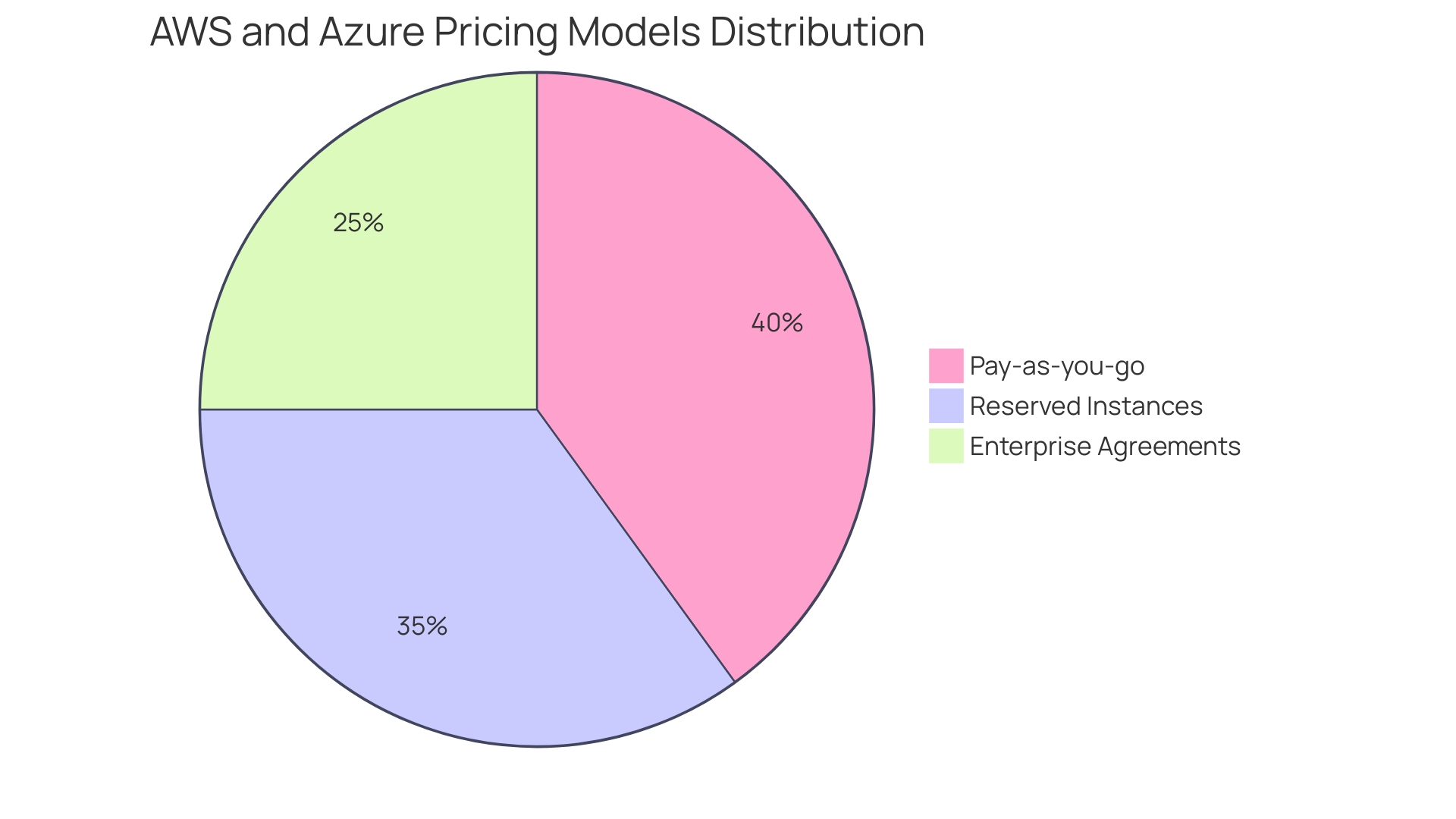
Machine Learning and AI Services
"AWS and another leading cloud service stand at the forefront of artificial intelligence (AI) and machine learning (ML), each offering a distinct suite of tools tailored to meet a variety of needs.". AWS showcases its prowess with services like SageMaker, which facilitates the entire lifecycle of machine learning—from building and training to deploying models. Alongside this, AWS provides a robust array of AI services, including Recognition for advanced image and video analysis, allowing organizations to extract meaningful insights from visual data.
In contrast, the platform emphasizes integration within its ecosystem through Machine Learning. This platform not only supports model development and deployment but also enhances collaboration among data scientists and engineers. The platform’s capabilities are particularly beneficial for enterprises like Aviva, which leverages ML across over 70 use cases to optimize various operational processes. Aviva's transition from a manual deployment of models to more automated solutions showcases the importance of streamlined workflows, as it previously hindered innovation by consuming more than 50% of their data scientists' time on operational tasks.
The rapid evolution of these platforms reflects a growing demand for flexibility and scalability in AI implementations. For instance, AWS’s recent developments include the introduction of diverse model capabilities within Amazon Bedrock, allowing businesses to evaluate and select models best suited for their unique requirements. This adaptability is essential as organizations strive to harness AI's potential effectively.
In particular, the complexity of ML models is illustrated by the experiences of the TR Labs team, which has evolved from a small group focused on specific tasks to a comprehensive team of over 100 members tackling diverse and intricate use cases. As the scale of operations expands, so does the necessity for robust management and monitoring of models in production—a challenge that both AWS and Azure aim to address through their evolving offerings.
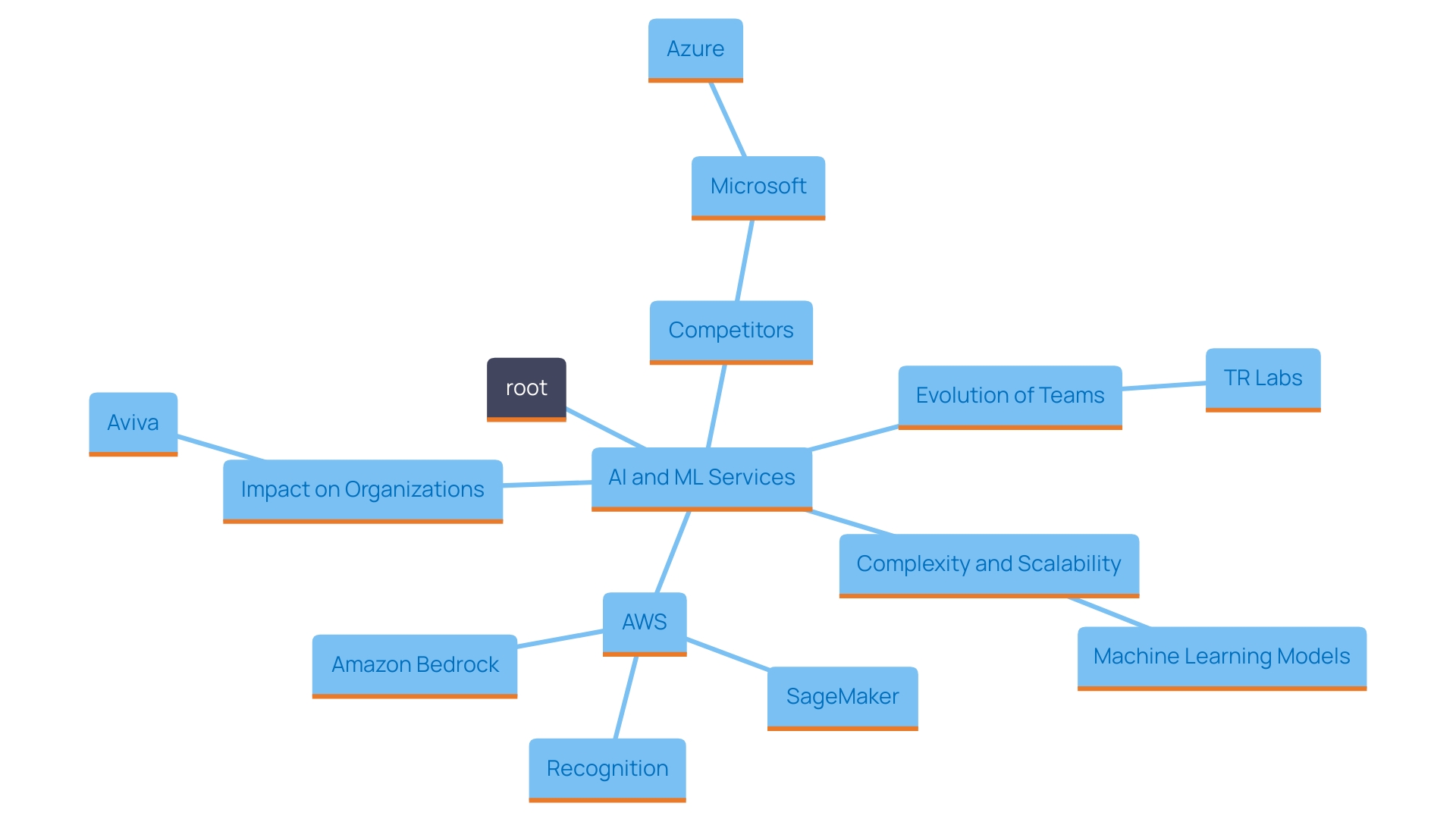
Global Availability and Regions
AWS stands out with the most extensive global infrastructure in the cloud computing landscape, featuring numerous regions and availability zones that ensure low-latency access for users around the globe. 'This expansive network is particularly advantageous for entities needing robust disaster recovery options and redundancy, as it allows for seamless data availability and system resilience in the face of potential outages.'.
Conversely, the platform also maintains a significant global presence, but places a strong emphasis on compliance with local regulations. This focus makes this platform an appealing choice for organizations that must adhere to specific legal requirements regarding data handling and residency. As companies increasingly navigate complex regulatory landscapes, such as GDPR in Europe, the platform's commitment to local compliance provides a competitive edge.
Both AWS and Azure are not static; they are in a continuous state of expansion, constantly adding new regions and capabilities. For instance, AWS's recent initiative to establish the European Sovereign Cloud is a direct response to the rising demand for localized data management solutions. This development not only enhances AWS's appeal to European businesses but also aligns with the growing emphasis on data sovereignty and privacy in the region.
The rivalry between these two giants demonstrates a wider trend in online computing, where the capacity to provide localized services is becoming ever more essential. According to recent reports, businesses are recognizing the importance of a cloud provider that can fulfill their specific operational needs while also ensuring compliance with their local laws. As a result, both AWS and Azure are shaping their offerings to cater to this evolving landscape, ensuring that their infrastructure meets the demands of a diverse clientele.
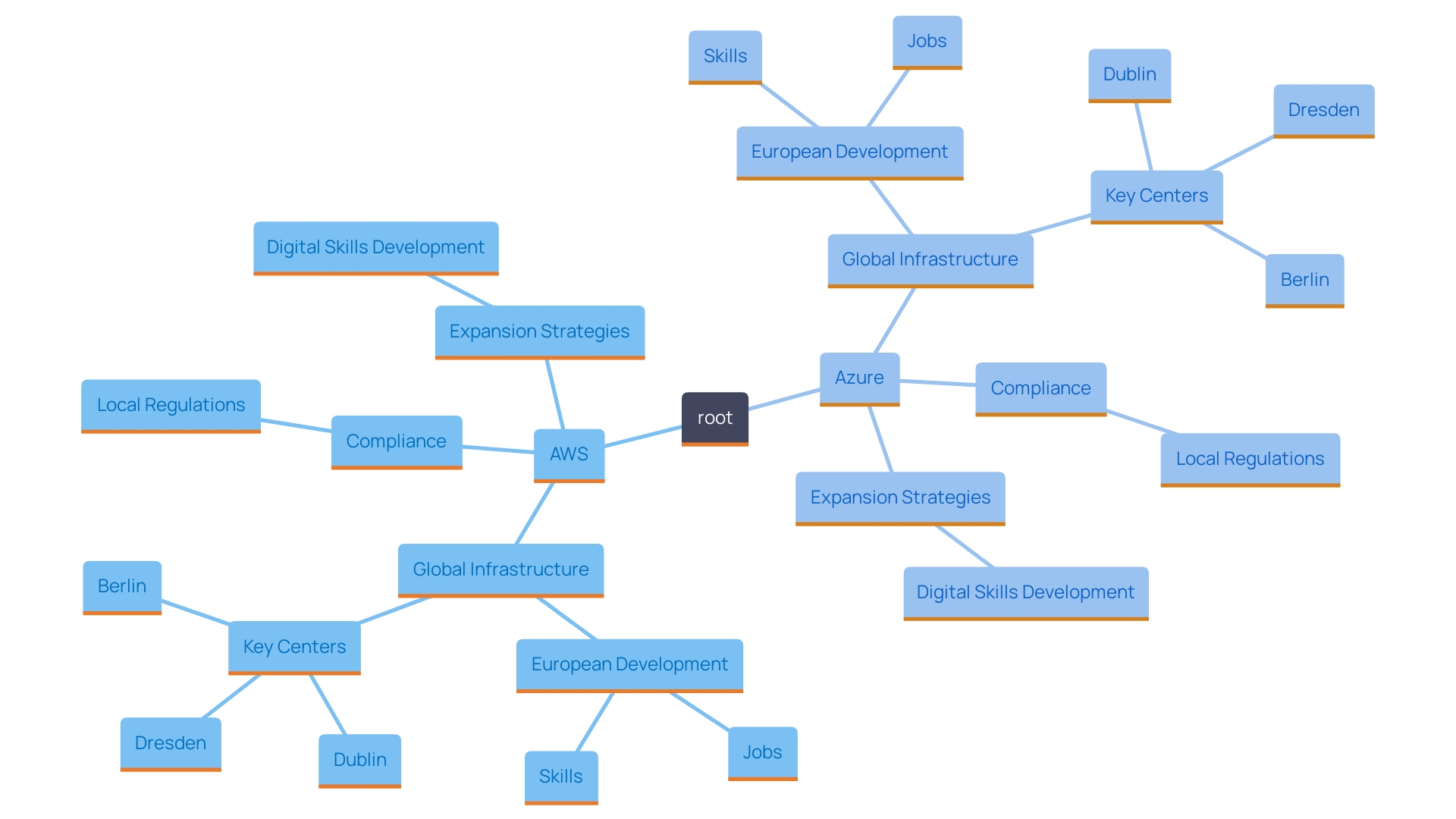
Conclusion
The exploration of Amazon Web Services (AWS) and Microsoft Azure reveals a dynamic landscape in cloud computing, where each platform offers distinct advantages tailored to meet diverse organizational needs. AWS, with its extensive range of services and proven scalability, has established itself as a reliable choice for businesses seeking robust cloud solutions. Its pay-as-you-go pricing model and diverse computing services, such as Amazon EC2, provide flexibility that is particularly appealing to companies aiming to optimize their operations.
On the other hand, Azure's seamless integration with the Microsoft ecosystem positions it as a compelling option for enterprises already utilizing Microsoft products. Its emphasis on hybrid cloud solutions and tailored pricing structures, such as Enterprise Agreements, allows organizations to leverage existing investments while adapting to cloud technologies. Furthermore, Azure's focus on compliance with local regulations enhances its attractiveness for businesses operating in regulated industries.
In terms of storage and machine learning capabilities, both platforms showcase their strengths. AWS leads in object storage with Amazon S3, while Azure offers integrated solutions that cater to organizations entrenched in Microsoft services. The advancements in AI and machine learning tools from both providers reflect the growing demand for scalable and flexible solutions, empowering businesses to harness the potential of data-driven insights.
Ultimately, the choice between AWS and Azure hinges on an organization’s specific requirements, including existing infrastructure, budget constraints, and compliance needs. As cloud computing continues to evolve, understanding the nuances of these platforms will be critical for businesses striving to make informed technology investments that align with their strategic goals.




